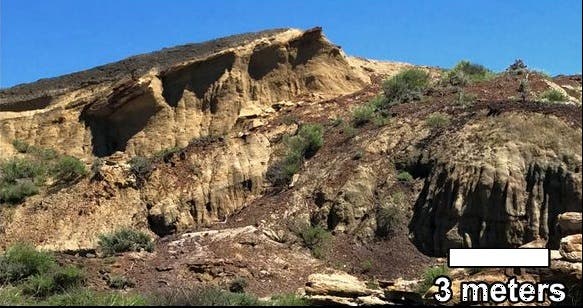
The Mesozoic lasted nearly 200 million years, being the second-to-last era of Earth’s geological history. It was the age of dinosaurs and giant coniferous trees, but it ended swiftly, when a large meteor smashed into the Earth 66 million years ago, creating the Chicxulub Crater in today’s Mexico. Virtually every animal over 10 kg became extinct, and life on the planet experienced one of the biggest extinction events in history.
The cataclysmic event also came at a bad time, a new study shows. For most creatures, the season when a giant meteor strikes the Earth makes little difference, but for others, it could be a game-changer.
Many mammals, birds, and plants are most vulnerable in the spring. That’s when they’re tending to their fragile offspring and are under particularly high levels of stress. So if something bad were to happen in the spring, that’s when it would hurt them most. But how do we know it happened in the spring?
A bad day for sturgeon
A first clue comes from comparing how animals in the northern and southern hemispheres recovered after this cataclysmic event. Southern Hemisphere ecosystems recovered twice as fast as those in the Northern Hemisphere — which makes sense if you assume that it was spring in the north (when many animals are most vulnerable) and autumn in the south.
But the key piece of the puzzle comes from a place called Tanis, in North Dakota. Tanis is part of the heavily studied Hell Creek Formation, a group of rocks spanning four states in North America renowned for fossil discoveries. Melanie During, a paleontologist at Uppsala University, studied fossil remains of filter-feeding sturgeons at Tanis.
The fish fossils are so well conserved that the researchers could take samples and analyze the atomic make-up of the fossilized fishbones. In particular, they looked at gills.
These gills contain spherules that emerged from molten rocks ejected from the meteorite impact. These spherules, rendering the fish unable to swim and breathe, would have likely killed the fish very quickly. The researchers then looked at isotope data from the fish bones (which are influenced by what the fishes ate, which is also influenced by season). All this seemed to point towards the Northern Hemisphere spring.
They also analyzed 3D micro-growth patterns. Somewhat like tree rings, these growth patterns change from year to year and season to season. These patterns show that the fish are more active in the spring, so researchers can tell which one is the part corresponding to spring. This too suggested that the fish were killed in the spring.
The findings echo the results from a separate group that published a study in December in the journal Scientific Reports in December. That study also suggested that the impact happened in the spring, which gives us another layer of confidence in the conclusion.
The study was published in the journal Nature.






